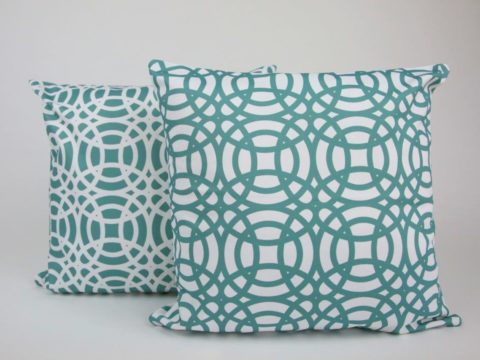Music in the Royal Courts
Chapter 1: Royal Musicians
Music was an important facet of elite sixteenth century culture. It played a part in every aspect of court life – processions, fanfares announcing the monarch’s approach, coronations, funerals and baptisms, music in the Privy Chamber, and music for the pageants and masques that entertained the court. Additionally, it was an integral part of religious worship.
Music was provided both by professional musicians, and by the courtiers themselves. Playing, singing and dancing were all essential elements of royal and noble education. Castiglione in his influential work ‘The Courtier’, laid great emphasis on the courtier’s need to have an appreciation of music and to play well as an amateur.
The professional court musicians had their own hierarchy – those who played ‘loud’ instruments, for example, trumpets and cornets, were less valued than those who played ‘soft’ instruments, such as stringed instruments and keyboards. These ‘soft’ players were the private entertainers of the monarch, and would form part of his Privy Chamber, often being rewarded with extravagant tips, and even personal praise from the King or Queen.
All of the Tudor and Stewart monarchs were musical, and took a personal interest in professional performers at their courts. Some of these court musicians were well known as writers and performers. Henry VII's most important musician was Robert Fayrefax (c. 1460 - 1521), organist of St Alban’s Abbey and first Doctor of Music at Cambridge. Fayrefax continued to serve Henry VIII, one of his last commissions being music for the Field of Cloth of Gold. Another well-known composer of Henry VII’s reign, also commissioned by Henry’s wife, Elizabeth of York, was William Cornysshe. In Scotland, Robert Carver provided music for the court of James IV and also for the coronation of James V, and, in Elizabeth’s reign, two of the most famous English composers of all time, Thomas Tallis and William Byrd, reached the heights of their genius.
Amongst the duties of the court musicians was tutoring the royal children, who all learned to play at least one instrument. In 1502, Elizabeth of York paid £4 for a ‘pair’ of clavichords for herself, and her husband, Henry VII, bought lutes for their daughters, Margaret and Mary who also played the clavichord. Mary was sufficiently proficient on it to entertain Philip, Duke of Burgundy, at Windsor when she was only eleven, whilst Margaret’s skill with the lute came in useful when she married James IV of Scotland. On the first evening that they met, the thirty-year old King put the thirteen year old princess at her ease by playing and singing with her. Their son, James V, was equally fond of the pastime, but although he was a talented sight-reader, his singing voice was described as ‘rasky and harske’ that is, raucous and harsh-sounding.
Amongst a musical family, Henry VIII was probably the most gifted. He played numerous instruments – the lute, the organ and other keyboards; recorders, the flute and the harp, as well as having a good singing voice. He wrote masses in five parts, motets and songs, the most famous probably ‘Pastime with Good Company’, although, disappointingly, probably not ‘Greensleeves’ which is later in date. All his life, Henry patronised musicians, with at least sixty on his staff at the end of his reign, not including his Gentlemen and Children of the Chapel Royal. Ambassadors frequently commented on the beauty of music at Henry’s court – making unfavourable comparisons with that of Francois I in France, whose chief singing master was often drunk!
Henry didn’t just play several instruments, he also had an enormous collection of them. His collection included cornets, bagpipes (called drones), viols, lutes, flutes, shawms and over 150 recorders (Tudor parents presumably suffered just as modern ones do!). He even had an early type of pianola in the form of a set of virginals that ‘goeth with a wheel without being played upon.’
Music was a pleasure that Henry VIII shared with some of his wives. He and Katharine of Aragon particularly favoured a friar by the name of Dionysius Memmo. Memmo had been the organist at St Mark’s in Venice, and came to England, bringing with him, at great expense, his ‘excellent instrument’. Henry was so delighted with Memmo that he requested the Pope to release the friar from his order, so he could join the King’s Chapel Royal. Henry and Katharine’s daughter, Mary, was equally mesmerised by Memmo - her first recorded words when she was about two years old were ‘Priest! Music! Music!’ repeated until Henry commanded him to play.
That same little girl, as well as playing the regals and virginals (both keyboard instruments), grew up to be a proficient lutenist, described in 1553 as ‘surprising even the best performers, both by the rapidity of her hand and the style of her playing.’ Mary was taught by Philip van Wilder, one of Henry VIII’s chief musicians, who played to the King in his Privy Chamber. Van Wilder went on to teach Henry’s son, Edward VI, to be ‘excellent in striking the lute’ and led a choir at Edward’s coronation, as well as being paid a substantial sum of money for taking care of the young King’s lute cases. Edward’s musicians included 18 trumpeters, 7 viol players, 4 sackbuts players, a harpist, a bagpiper, a drummer, 8 minstrels and a rebec player - a rebec is a type of fiddle, with a bow.








